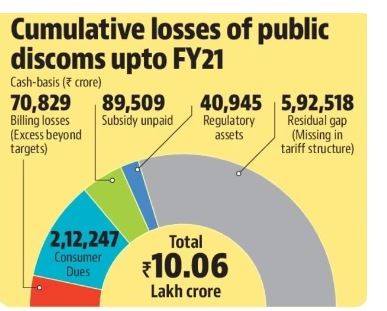7667766266
enquiry@shankarias.in
The Union Power Ministry’s latest set of rules hopes to improve the financial health of DISCOMs.
|
Aggregate Technical & Commercial (AT & C) Losses
ACS-ARR Gap
|

|
Steps Taken to Boost the Power Sector |
|
References